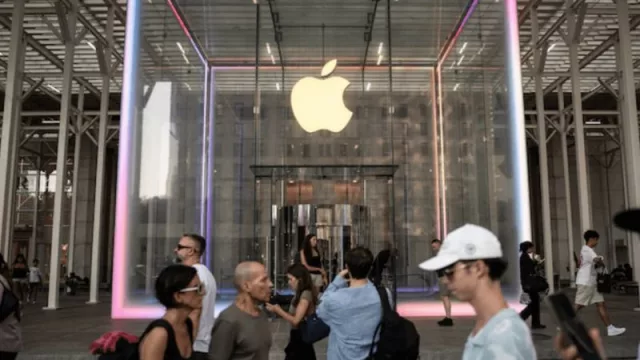Summary and Insights
TGI Fridays' recent decision to close 50 locations serves as a wake-up call for the entire culinary sector. In a world where consumer preferences evolve at lightning speed, brands must be agile and adaptive. The restructuring of TGI Fridays could mark the dawn of a new era, wherein restaurants not only serve food but also craft meaningful experiences for their patrons.
Gastronomy has transcended its status as an end in itself, becoming the starting point for a broader commercial ecosystem. Brands that grasp this disruption and adapt to the new reality will not only survive but thrive in an ever-evolving marketplace.
Key Points:
-
TGI Fridays has opted to close 50 locations in the U.S.
-
The chain faces pressures from shifting consumer preferences and competition.
-
A potential bankruptcy filing is being considered to restructure debts.
New Dimensions of Profitability
What was once seen as a traditional business model has been reinvented. From boutiques and specialty markets to themed events, revenue diversification has transformed profitability. The business's financial landscape has evolved from traditional margins of 3X to projections of 5X or 7X, thanks to the integration of complementary experiences. Failing to embrace this shift means literally ceding market share.
The Changing Landscape of Gastronomy: An Emerging Reality
The Tough Decision for TGI Fridays
TGI Fridays, one of the most recognized restaurant chains, has made the drastic choice to close 50 of its outlets, leaving many to question the brand's future direction. Reports indicate that this action is part of a restructuring strategy aimed at addressing underperformance in certain establishments. The situation is alarming, especially considering that the chain once boasted a total of 213 restaurants at its peak.
Shifts in Consumer Behavior
The pandemic has not only transformed how we eat but also what we seek in a dining experience. This shift has compelled TGI Fridays to reevaluate its offerings and business model. Fierce competition from fast-food chains and inflationary pressures have changed the game, forcing traditional restaurants to adapt swiftly.
The Era of Experience
Contemporary gastronomy is not merely about serving food; it’s about creating memorable experiences. From live events to food markets, consumers are on the lookout for venues that offer more than just a menu. This is a pivotal moment for TGI Fridays and other chains to reconsider their value propositions. Menu innovation, venue design, and interactive experiences are essential to attract an audience seeking authenticity and connection.
The Culinary Revolution: From Restaurants to Experiential Ecosystems
In a post-COVID world, the essence of the culinary business has evolved radically. This transformation goes beyond a mere menu; we have entered an era of gastronomic-logistical-conceptual-experiential-thematic-multichannel dynamics. This new paradigm redefines how we interact with food and space, creating experiences that transcend mere sustenance.
A New Global Approach
The crisis of mass closures in the sector has prompted the reopening of venues that not only offer quality products but are also steeped in cultural and thematic narratives. From museums to repurposed factories, recovery is based on a conceptual strategy that integrates culinary excellence with local cultural identity.
The Disruptive Mindset
Today, place culture and customer experience are as crucial as the quality of the dish itself. The creation of multi-team setups in gastronomy has enabled unprecedented professionalization, where each business unit becomes an extension of the comprehensive experience offered to the customer.
The Power of Communication
The communication strategy has undergone a drastic transformation: it’s no longer about selling, but about generating interest. The narrative of place and community takes center stage, even overshadowing the chef or the product itself. This approach fosters an emotional bond that is key to customer loyalty.
Illustrative Examples
Starbucks: Gains more from its accessories and branded products than from coffee itself, turning the customer experience into a virtual wallet.
Disney: Investment in entertainment, though it might initially seem like a loss, boosts sales in merchandise and dining, demonstrating that experiences can drive growth.
-
IG: @infonegociosmiami
Why do Starbucks and Nike appoint CEOs over 50 and shift their strategies towards greater business expansion, cross-pollination, phygitality, and real-life enhancement?
Financial Restructuring: Chapter 11
The prospect of TGI Fridays declaring bankruptcy under Chapter 11 could serve as a temporary lifeline. This process would allow the chain to restructure its debt, renegotiate leasing contracts, and focus on its most profitable locations. However, this path is not without its risks and brings uncertainty regarding the future of its employees and the continuity of its offerings.
The Importance of Diversification
To survive, restaurant chains must diversify. TGI Fridays could greatly benefit from exploring new business models, such as online product sales or the development of a takeout meal line. Additionally, by partnering with community events or food festivals, they could revitalize their brand and attract new clientele.
Local Connection: A Key Element
Establishments that genuinely connect with their communities are more likely to thrive. TGI Fridays should consider how it can better integrate into the communities where it operates, offering menus that reflect local tastes and collaborating with regional suppliers. This approach will not only enhance its image but also foster customer loyalty.
-
Infonegocios RED: 4.5 million Anglophone Latinos reading business news daily.
-
Contacts: [email protected] or [email protected]












Tu opinión enriquece este artículo: